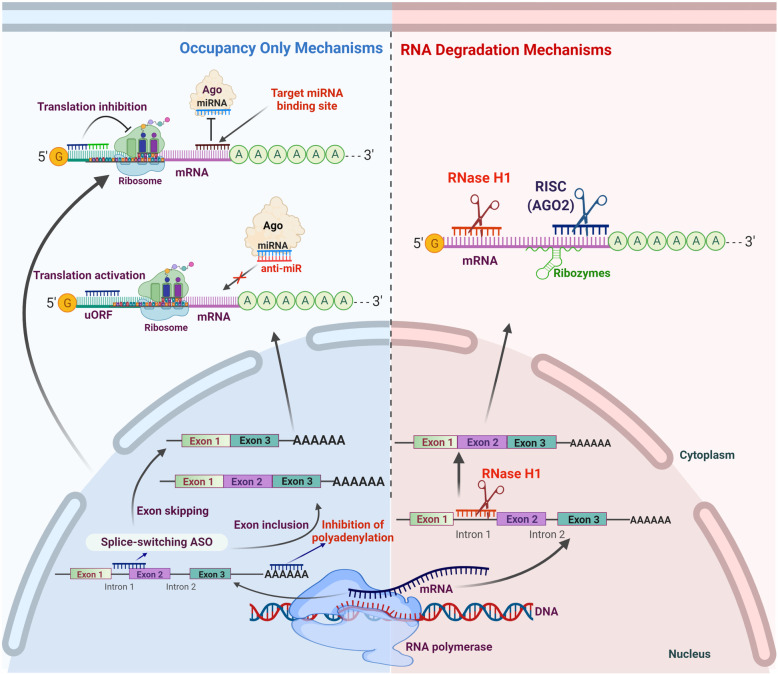Fig. 1.
Different mechanisms of action for antisense oligonucleotide mediated gene silencing. Based on post-hybridization events, antisense oligonucleotides can modulate the expression of target gene through two different mechanisms 1) Occupancy-only mechanisms 2) RNA degradation mechanisms. In occupancy-only mechanisms, ASOs binding with target RNAs does not result in RNA degradation. It modulates the gene expression in several ways: splicing modulation using splice switch ASOs to perform exon-skipping or exon inclusion; inhibition of mRNA polyadenylation; translational modulation through non-DNA-like ASOs that base pair with mRNA, either to inhibit translation, for example, steric blocks or to activate translation by binding to inhibitory elements like upstream open reading frames (uORF). For the inhibition of miRNA-related function, these ASOs can also modulate miRNA either by base pairing with miRNA (anti-miRs) or by occupying miRNA-responsive elements (MRE) on target mRNA to nullify the effect of a particular miRNA. On the other hand, the ASOs in RNA degradation pathways trigger the target mRNA cleavage either by RNase H1 or siRNA-mediated AGO2 RISC complex and ribozymes mediated cleavage

